Business
The TopRanked.io Weekly Digest: What’s Hot in Affiliate Marketing [Week 14]
What’s the link between banana republics, social media platforms, and an affiliate program? That’s one of the two main topics for this week. The second is the Twitter algorithm. Now that it’s been out for a week and we’ve had time to chew on it, we’re gonna take a deep dive and show you how to use it to go viral. (Keep an eye out, there’s at least one secret recipe buried in there.)
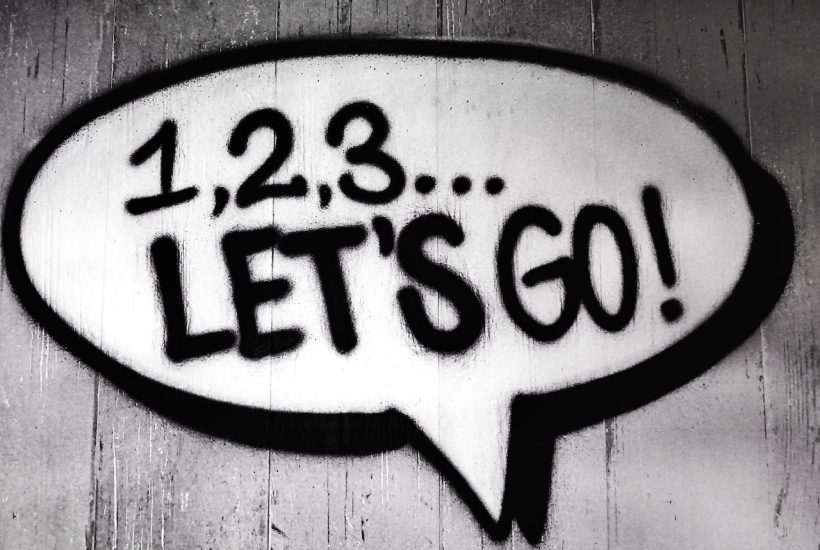
Quick Disclosure: We’re about to tell you how PromoRepublic runs a great local marketing platform (and an equally great affiliate program). And we really mean it. Just know that if you click on a PromoRepublic link, we may earn a small commission. Your choice.
In many ways, social media platforms are like banana republics. And for those of you with zero interest in economics or the political sciences, no, I am not talking about Banana Republic.

Nope. I’m talking about the classic banana republic. You know, that thing where a country (usually run by an all-powerful dictator) is entirely dependent on a single natural resource.

The parallels with social media are incredible. Let’s start with dictators.
I mean, Twitter’s got Musk. And Facebook’s got Zuck.

And, as for a single-resource economy… do I really need to explain this one?

The only thing missing here is the bananas.
But what if we just called them… let’s say… a PromoRepublic?
That works.
TopRanked Affiliate Program of the Week — PromoRepublic
With that introduction out of the way, here’s the #1 partner program from our affiliate marketing directory for this week: PromoRepublic.

And, surprise, surprise, PromoRepublic just so happens to offer a product that’s highly relevant to social media marketing.
Wanna know more?
PromoRepublic — What Is It?
Broadly speaking, PromoRepublic is a local marketing platform. As such, PromoRepublic is mostly targeted at restaurants, retail stores, fitness centers, realtors, and any other business where a solid local marketing strategy is important.
PromoRepublic is also targeted at the pros working in this space, like marketing agencies.
As for what PromoRepublic actually offers, the answer is a lot. But, to be more specific about the PromoRepublic product offering, here’s a few high-level details:
- Social media marketing management.
- Digital asset management.
- Review management.
- Lecal SEO tools.
- Listing management tools.
- Etc.
Basically, PromoRepublic provides the toolbox businesses and marketers need to execute a local marketing strategy.

PromoRepublic Affiliate Program Highlights
The highlights you need to know about PromoRepublic are:
- PromoRepublic pays 20%-35% rev share.
- PromoRepublic converts at 1-3% on average
- Top PromoRepublic affiliates earn about $3K a month
- PromoRepublic assigns you a personal affiliate manager
- PromoRepublic feeds you plenty of time-limited discounts to help you promote and convert.
- Tons of PromoRepublic education material is given to you to use in your promotions.
As for what PromoRepublic commissions work out to per sale, there’s a massive range. It starts at $20-30 if you sell a PromoRepublic “SMB Solo account” and goes up to well over $1k if you sell a PromoRepublic white-label solution to someone.
Basically, the sky is the limit.
Here Are the Rest of the PromoRepublic Details you Need
We’ve already covered PromoRepublic on TopRanked, so head over there for our full PromoRepublic affiliate program review.
Alternatively, if you want to get started as an affiliate, head here to signup with the PromoRepublic affiliate program.
Or, if you think you might need PromoRepublic for your own local marketing efforts, head here to check out the PromoRepublic product for yourself.

Affiliate News Takeaways
The Twitter Algorithm in Detail
Precisely one week ago, Twitter officially open-sourced its algorithm, which is now available here.
Now, obviously, most of us aren’t going to be able to make much sense of what’s going on here, even if we had the time to trawl through it all. But, fortunately, a few brave souls did the heavy lifting to give us all a nice entry point.
So, to kick things off, here’s the best overview I could find of the different “features” used to feed the algorithm. Appropriately, it’s delivered as a Twitter thread.
At a high level, there are no surprises here — engagement counts. But, once you start to scratch the surface, there are a few curveballs. For example, did you expect likes to count 30x more than replies?
Crazy, right?
Well, not so fast. There’s a lot more going on behind the scenes than simply tallying up a bunch of popularity points. And while I’m not going to pretend I understand half of what’s going on, there are a few clues as to why this may be.
For starters, let’s kick off with what is probably the most important part to get your head around — “HeavyRanker”.
HeavyRanker — A High-level Overview
Ultimately, Twitter’s algorithm has one goal in mind. That is (no surprise) to create as much positive engagement with the Twitter platform as possible. In essence, they want you to stick around longer, or to come back and reengage with the platform. To optimize for this, it uses something called “HeavyRanker”.
As to how HeavyRanker works, the best answer is magic. Yes, of course, deep down, there’s machine learning going on. But, as Arthur C. Clarke said, “Any sufficiently advanced technology is indistinguishable from magic.” So, let’s just call it magic.

So, how does this magic… err, I mean machine learning work?
At a high level, it’s actually kind of simple — it predicts the probability of a bunch of different engagement types, both positive and negative.
An example of a positive engagement type would be a user replying to a Tweet. An example of a negative engagement type would be a user reporting a Tweet for violating The Twitter Rules.
From there, each of these engagement types is weighted according to how positive or negative that engagement type is for Twitter.
As for what those engagement types are and what weight each one is given, here’s the full list in a nice convenient table.
| Engagement Type | Weighting |
| The probability the user replies to the Tweet, and this reply is engaged by the Tweet author. | 75 |
| The probability the user replies to the Tweet. | 27 |
| The probability the user opens the Tweet author profile and Likes or replies to a Tweet. | 12 |
| The probability the user will click into the conversation of this Tweet and reply or Like a Tweet. | 11 |
| The probability the user will click into the conversation of this Tweet and stay there for at least 2 minutes. | 11 |
| The probability the user will ReTweet the Tweet. | 1 |
| The probability the user will favorite the Tweet. | 0.5 |
| The probability (for a video Tweet) that the user will watch at least half of the video | 0.005 |
| The probability the user will react negatively (requesting “show less often” on the Tweet or author, block or mute the Tweet author) | -74 |
| The probability the user will click Report Tweet. | -369 |
Now, obviously, all of this is liable to change — Musk said so.
So, if this is something you’re going to use in a Twitter strategy, I’d suggest you add this link (the official Twitter source for the above table) to your bookmarks and check it regularly.
As for what “features” this magic machine learning model uses to calculate the probabilities of each event, we’ll get into some of that soon.
Rember That Time When We Told You How to Go Viral on Twitter?
First, before we move on, let’s illustrate how some of the above plays out in a real-word scenario.
To get started, pay attention to the 1st, 4th, and 5th most important ranking factors. Those are:
- The probability the user replies to the Tweet, and this reply is engaged by the Tweet author.
- The probability the user will click into the conversation of this Tweet and reply or Like a Tweet.
- The probability the user will click into the conversation of this Tweet and stay there for at least 2 minutes.
Now go and give our “how to go viral on Twitter” post a read. As a recap, a big part of that formula involved replying to your own Tweet.
Suddenly, this dirty little trick makes sense. To illustrate:
- Replying to your own Tweet is a signal that you’re more likely to reply to users replying to your Tweet (the most important ranking factor).
- Replying to your own Tweet creates a thread, increasing the likelihood a user will click into the conversation of this Tweet and reply to or like a Tweet. (More Tweets to read, like, or reply to.)
- That same thread also increases the likelihood that a user will click into it and stay there for 2 minutes. (More Tweets to read.)
Also, something else worth noting — PromoRepublic provides a platform for managing engagement on social media. So if you put two and two together…

Which Communities Do You (and Your Tweets) Belong To?
Once we move away from the obvious engagement measuring metrics (likes, replies, the inclusion of media, etc.), the most interesting thing is what Twitter calls “SimClusters”. Basically, this is a way of grouping users and Tweets into communities and figuring out how relevant they are to each other.
What’s the purpose of this?
Easy. Let’s say you belong to an NBA community. In that case, Twitter likes it when you Tweet about stuff that other NBA fans like. If, however, you Tweet about My Little Pony but belong to an NBA community, Twitter wouldn’t like this as people in your community are less likely to engage with this Tweet. Thus, your Tweet would get demoted.
As for how Twitter calculates “SimClusters”, it actually made some of the details public a few years ago in a presentation here. The basic gist of that presentation is that it’s a two-stage process.
- Stage 1: Discover communities anchored by a cluster of influencers.
- Stage 2: Represent users and content in the space of these communities.
Let’s try and break down what that means in plain English.
Stage 1
Stage 1 is a three-step process that goes like this.
Step 1: Create a “directed graph” of “incoming connections.” In other words, graph every user and every “follow” on Twitter in a graph that looks like this:
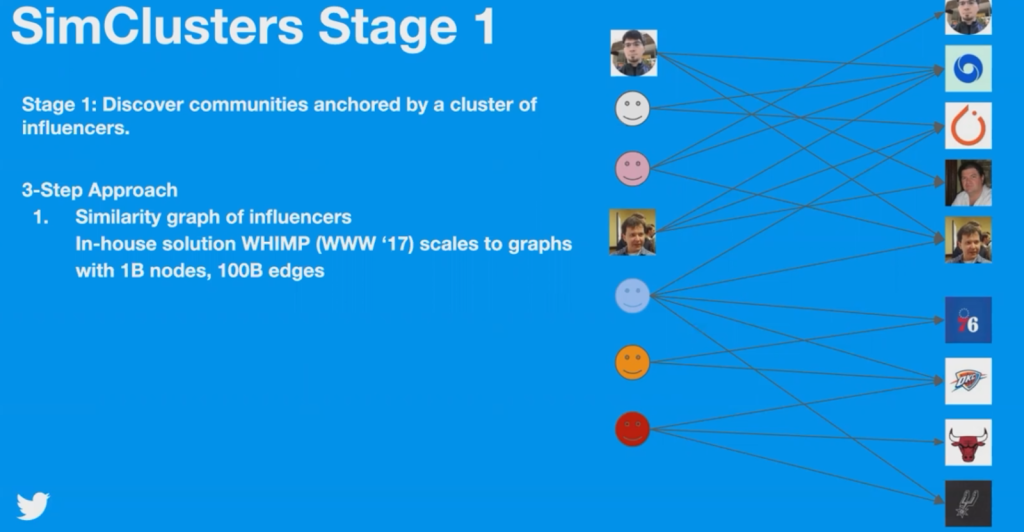
Step 2: Transform this “directed graph” into a “non-directed graph” that will reveal community clusters. That looks like this:
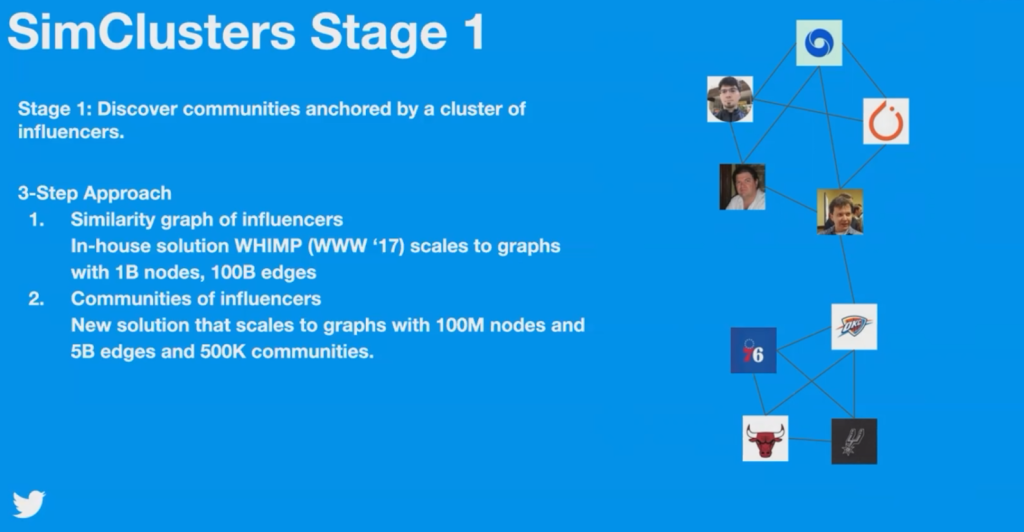
Step 3: Assign users to the communities Step 2 discovered.
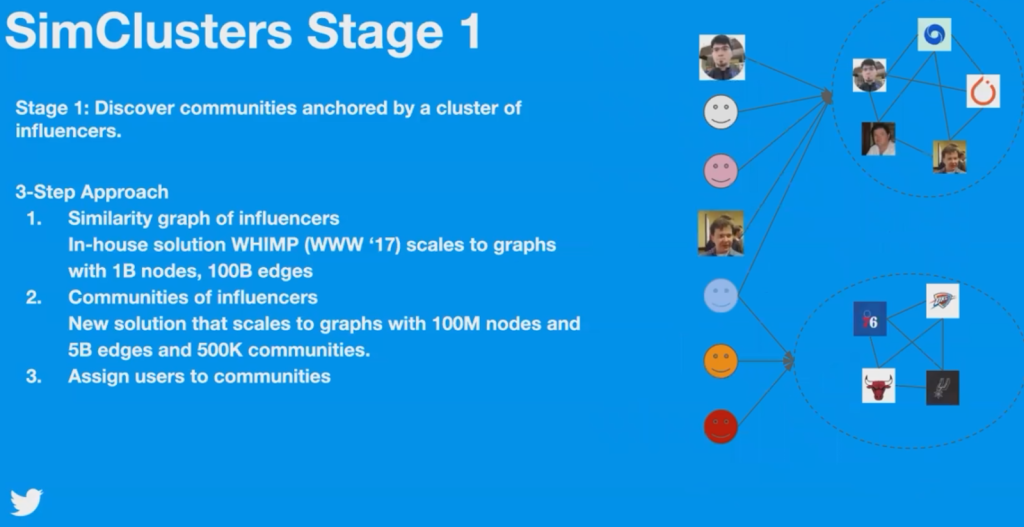
As for how users are assigned to a community, that seems to be a simple case of counting the connections. For example, the red face, who had three “outgoing connections” to NBA teams in Step 1, was assigned to the NBA community in Step 3.
And yes, a user can belong to multiple communities. How many? Well, to quote the presenter, “A single user is often associated with dozens of different communities.”
Stage 2
The basic gist of Stage 2 is that this is where “the current popularity of the [Tweet] in the… community” is calculated. How does it work?
Well, it’s not all about hashtags or other easily manipulated “relevance” factors. And while there’s no single straight answer, it seems the most important thing here is (surprise, surprise), the amount of engagement that Tweet gets from a community.
Summary
Basically, if you run an NBA account, follow other NBA accounts, get followed by people who follow other NBA accounts, and then post NBA content that gets liked by others in the NBA community, you’ll get a massive visibility boost in the NBA community.
Psst… Pro Tip
By the way, note that Twitter “communities” are not limited to “topics” per se, such as the NBA. They are defined by groups of connections, meaning that anything could become a community, so long as Twitter’s magic machine learning can identify clusters of connections.
What does that mean?
Well, there are probably more than a few clusters of user connections based on geography. That means, posting “local” content to engage users of a certain city would also work.
And speaking of a local strategy, did we mention PromoRepublic is the marketing management platform for local marketers?

Just saying.
Negative Ranking Factors
If you dig into the ranking factors a little, there are also a bunch of negative ranking factors that are worth looking out for. Here are a few:
- External (“untrusted”) links are penalized (but engagement neutralizes this).
- Posting unknown words or in unrecognizable languages hurts you (hint: spell check your Tweets and don’t use too many made-up words.)
- If the number of accounts you follow is higher than the number of accounts following you, you get penalized.
- Publishing “misinformation” will get you penalized, as will NSFW content, hate speech, and… anything about Ukraine.
- Getting unfollowed, blocked, muted, or getting any other negative engagement with your account in the last 50 days hurts.
And, if we put our thinking caps on and put two and two together, we can also deduce that there are certain behaviors that, while not explicitly mentioned, will hurt you. For example, if we follow the logic of SimClusters, the following behaviors would hurt you:
- Making random connections (follows) to random accounts such that you don’t have a strong affinity with any community. (Hint, if your end goal is real engagement, buying followers/likes/etc. will probably hurt, as will simple follow-unfollow tactics.)
- Posting content that’s not relevant to any of the communities Twitter has assigned you to.
One thing to note about the “simple follow-unfollow tactics” mentioned above is that this isn’t to say follow-unfollow can’t work. However, if you’re going to do this, don’t just randomly add followers from what you think is a high-affinity account.
For example, you might think that adding @SHAQ followers would be a smart move if you want to run an NBA account. But don’t forget, plenty might only be following him because, for example, they’re interested in dark men with big d*cks.

Or, on a more serious note, let’s say you targeted Chicago Bulls fans. How many of those people are true NBA fanatics, and how many are only following it because they’re from Chicago and only interested in the Chicago Bulls?
I don’t know. And neither do you.
So what you should do instead is to gather up follower lists from multiple NBA-relevant accounts. Now start finding the users who crop up in several of these lists.
Then, if you want to take this a step further, calculate a ratio between the number of NBA-relevant accounts those users follow and the total number of other accounts they follow. The higher this ratio, the stronger their NBA affinity will be.
Admittedly, this is a lot of work. But it would have a massive payoff.
Takeaway
The Twitter algorithm is huge, and we’ve really only scratched the surface here.
It’s also unlikely that anyone will definitively crack the code. Besides the spaghetti ball complexity of it all, a “former Twitter engineer” is on the record as stating that 80% of the production code hasn’t been published.
But, with that said, the deeper you dig, the more ideas for experimentation you will come up with. And you can also bet that other platforms are using similar factors in their algorithms. Therefore, a little time spent on deciphering Twitter will give you ideas to test on other platforms.
However, for the sake of providing a clean takeaway, the highlights of what we just covered are:
- Engagement is still king.
- But not all engagement is born equal.
- Likes count more than retweets, which count more than replies.
- But replies by the Tweet’s author to replies on their Tweet are huge.
- Random engagement alone doesn’t count for much.
- But community-relevant engagement does.
So the takeaway is this — find a niche and hammer it. Amass followers who show an affinity for that niche. Post content that’s relevant to that niche. And make sure you hang around to reply.
Also, make threads more often.
If you can do all of the above, then you can probably get away with posting your “untrusted” external links without getting dinged.
Closing Thought
We like to hand out a lot of advice here. But have you ever stopped to think that sometimes some of it’s bad?
Let’s start with an example. Let’s pretend that this week we’re going to pass on some words of wisdom from Sherlock Holmes.
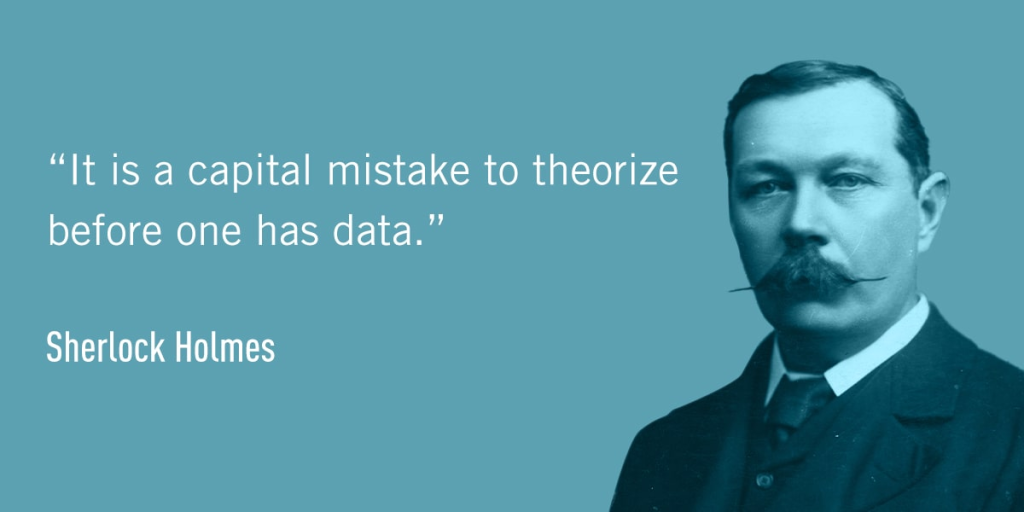
Looks like good, solid advice, right? Even if it is from a fictional character.
Well, maybe. But don’t just take the advice blindly.
To demonstrate, let’s pretend you want to use the Twitter algorithm revelations to formulate a new theory about how to go viral on Twitter.
Where are you going to get your data?
By looking at likes and engagements on other Tweets?
Maybe. But good luck gathering and analyzing enough clean data to actually start formulating anything useful. I can guarantee that even if you could, you’re going to spend an inordinate amount of time or money collating that data.
Instead, maybe you’d be better served by just creating a new hypothesis and testing it. It’s quick, low-cost, and will immediately give you the most useful data available — actual proof that your theory does or doesn’t work.
But then again, maybe collecting data first would help you see theories that no one else would. Life’s complicated, right?
Right.
Fortunately, getting insights from your data isn’t with PromoRepublic and their Insights and Suggestions product. Go use it, or promote it.

__
(Featured image by SevenStorm JUHASZIMRUS via Pexels)
DISCLAIMER: This article was written by a third party contributor and does not reflect the opinion of Born2Invest, its management, staff or its associates. Please review our disclaimer for more information.
This article may include forward-looking statements. These forward-looking statements generally are identified by the words “believe,” “project,” “estimate,” “become,” “plan,” “will,” and similar expressions, including with regards to potential earnings in the Empire Flippers affiliate program. These forward-looking statements involve known and unknown risks as well as uncertainties, including those discussed in the following cautionary statements and elsewhere in this article and on this site. Although the Company may believe that its expectations are based on reasonable assumptions, the actual results that the Company may achieve may differ materially from any forward-looking statements, which reflect the opinions of the management of the Company only as of the date hereof. Additionally, please make sure to read these important disclosures.

-

 Cannabis1 week ago
Cannabis1 week agoRemexian Wins Legal Battles Amid German Cannabis Licensing Dispute
-

 Fintech5 days ago
Fintech5 days agoItaly Issues First Natively Tokenized Minibond on Public Blockchain
-

 Cannabis2 weeks ago
Cannabis2 weeks agoUS Hemp Regulation Overhaul Sparks Global Impact
-

 Fintech2 days ago
Fintech2 days agoN26 Hires UBS Executive to Lead Turnaround Amid Regulatory Pressure












